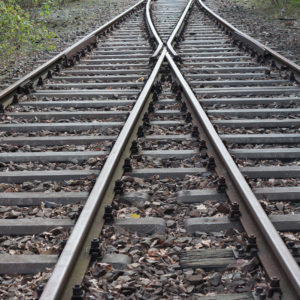From driverless cars to delivery drones, technology is reshaping transportation. But to maximize the safety and economic impact of these changes and ensure continuing innovation, businesses need a regulatory environment that keeps up with the blistering pace of technological advancement.
The transportation industry is a prime example of how innovation has increased safety and efficiency. Today, for instance, a ship operating with a steam engine or a plane functioning without autopilot would seem antiquated and preposterous. And with autonomous vehicle technology on the brink of becoming an everyday reality, driverless tractor-trailers could soon be moving goods along the country’s highways, increasing the safety and efficiency of motor vehicle transportation.
As transportation innovations are implemented, the government must respond by adapting regulations to maximize their safety and economic potential for businesses and American consumers alike. Unfortunately, a newly proposed rule would take freight rail — one our country’s oldest, safest and most essential transportation industries — in the wrong direction.
For years, freight railroads have been implementing their own innovations that have made the industry safer. Trackside acoustic and temperature detection devices can identify wheels that may need repair or replacement or brakes that may not be working correctly. Sonar can look inside the tracks themselves for problems not visible to the naked eye. In the locomotive, video cameras can record events both inside and outside the cab, and cell phone detection technology can detect when a potentially distracting cell phone is in use.
And much like autonomous vehicles are on the brink of revolutionizing the auto industry, railroads are deploying technology known as Positive Train Control, which is designed to prevent accidents by automatically stopping trains and overriding human error.
Safety innovations such as Positive Train Control are transforming freight rail by increasing safety and reducing reliance on human operators, who can be distracted or otherwise just make mistakes. And as technology has evolved over the years, the need for large crews has diminished while accident rates have plummeted to record-low levels. In fact, many short-line railroads are using one-person crews with safe and efficient results.
So it is only logical that big railroads should soon follow suit. Just like remote control locomotives revolutionized freight rail 40 years ago by enabling train movements without an engineer physically in the cab, modern technologies are advancing the industry into its next phase.
As these innovations continue to transform freight rail and the entire transportation sector, federal regulations must adapt to reflect this modernization. Unfortunately, a recent Federal Railroad Administration proposal to mandate two-person crews on freight trains flies in the face of this progress and threatens to stall continued innovation by dragging the industry back to the past.
While the FRA claims this would enhance safety — a worthy goal that should be the top priority of all transportation industries — the agency itself has acknowledged there are no data suggesting two-person crews are safer. The rule would, however, block railroads from fully maximizing the potential of its new technologies, which is the opposite of what the government should be doing as innovations make businesses more efficient.
Meanwhile, as companies like Google and Ford continue to invest in driverless cars, the Department of Transportation — which oversees the FRA — is wisely expanding its support for this technology. In fact, the Obama administration’s 2017 budget would provide nearly $10 billion for the development of these vehicles.
But the FRA’s proposal potentially sets up a scenario that limits freight rail’s ability to compete with other shippers, which would affect the entire economy. A recent study from Towson University found that freight rail accounted for $274 billion in economic activity in 2014 alone, while supporting nearly 1.5 million jobs nationally. Limiting rail’s ability to compete will only stifle this economic contribution.
Much of our nation’s economic power and ability to innovate depends on the government creating an environment that allows businesses to invest in technology that improves performance, efficiency and customer service. To continue doing this, we need forward-thinking regulations that keep up with the pace of innovation and allow businesses to maximize the potential of game-changing technology.

